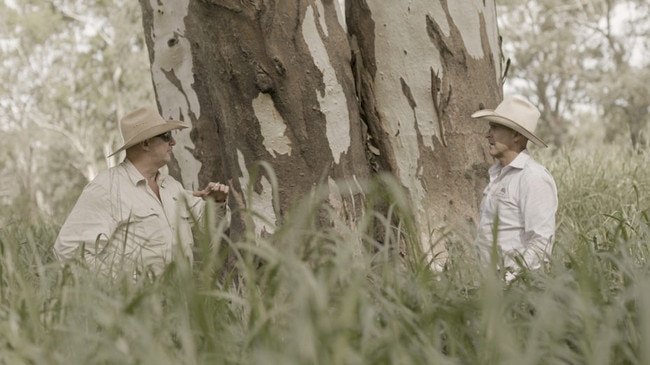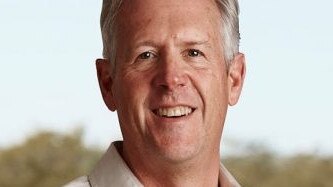Packhorse Pastoral: Making money from soil and pastures
A unique pastoral company has set their sights on carbon neutrality by 2028 — without compromising profits.
Take two million hectares of land.
Regenerate the soil and pasture, and run cattle in a ‘grass motel’ style beef operation, designed to give processors more control and better prices.
Open up the enterprise to investment opportunities to secure the future of food security and environmental stewardship in Australia.
And finally, make sure you do all this in just five years.
That’s Packhorse Pastoral Company’s unique approach to farming: a broad, albeit it ambitious plan to revolutionise broad scale agriculture in Australia.
But according to Packhorse chairman Tim Samway substantial regenerative change can only be done on a large-scale.
The team behind this investment-style farming model has so far acquired 80,000ha of land within its portfolio across NSW and Queensland with 20,000ha of pastoral land under the Packhorse Pastoral label: Stuart’s Creek west of Roma, Queensland, and Ottley Station, north of Inverell, NSW.
“It started with an idea around regenerative agriculture and cattle farming, but it actually morphed into something bigger,” Tim said. “We want to buy two million hectares of land, and actually create a real-scale regenerative agriculture business.”
Investors come primarily from private Australian investors, including a number of Packhorse members and private wealth investors.
For Tim, the focus is on building an Australian business, funded by Australian money.
“The major focus in the long term is going to be on Australian land investors. We really want this to be an Australian investment and for Australians to work with the land that we’ve got here,” he said.

CARBON NEUTRALITY
Packhorse has set an ambitious target of achieving carbon neutrality by 2028, while also rapidly expanding the size of its footprint within Australia.
The sheer scale of the investment company’s portfolio of pastoral land, Tim says, coupled with government initiatives to sequester carbon in the soil for a profit, makes for a prime opportunity to dive headfirst into regenerative agriculture across vast swathes of land.
“The opportunity to do this at scale really derives from a number of areas … the first is the amount of property available for us to buy, reflects farmers with real succession issues,” Tim said.
“That is, they’re old, their kids have moved away, and they haven’t got anyone to leave the property to. And they’ve undercapitalised if they’ve lived on these properties and haven’t treated (the property) the way that a commercial enterprise would do, which is to spend capital on it.
“The second point is the benefits of doing things at scale, allows you to do things at a lower cost … you can’t do this on a smaller scale, you actually have to aggregate properties. You have to do this at scale.
“The third thing … we’ve started work on the carbon sequestration piece. We do have the largest carbon soil organic carbon sequestration project at the moment with the Clean Energy regulator, across about 13,000 acres. But the reality is, that is a massive opportunity … so the reality is that you need to get to a certain scale to get the cost down to make that actually work.”

‘GRASS MOTEL’ MODEL
While the footprint of the Packhorse enterprise may be vast, with varying landscapes and climates across NSW and Queensland, one thing remains key: the management and regeneration of soil and pastures.
This is an approach, Tim says, central to maximising returns while growing cattle at a fast rate.
A ‘grass motel’ model is in place across the properties, where processors themselves own the cattle which are managed and raised by the Packhorse team, paying a fixed fee for access to the property and a weekly agistment fee.
Packhorse chief ringer Geoff Murrell said the grass motel set-up allows for a pre-negotiated base rent agreement, protecting the properties by locking in a guaranteed revenue stream to cover overheads, “regardless of the number of animals agisted on the asset”.
“As Packhorse do not own the livestock, they are not exposed to the buy-sell market risk,” Geoff said.
Packhorse’s staff is responsible for the upkeep and care of the animals while on property, while also providing a fully-serviced management model to cattle owners through the agistment package, working closely with owners to implement cattle management, such as vaccinations and pregnancy testing.
“So it’s good for (the processor) because the cost to get that animal to a weight that they need is lower than going into the market and buying it, they get a price advantage,” Tim said.
“We are fully linked into that supply chain, so it’s transparent. They can see the weight of the animals. We’re giving them the number, linked in, so they know when that animal will be finished.”
It’s a win-win situation, Tim said, in terms of transparency and cost, while also making health of the soil a priority across all properties.
“This is not unlike Westfield buying a rundown shopping centre, and doing it up, making the whole thing work better,” Tim said.
Cattle are grazed directly on legume crops, a move which works to boost the health of the soil while also fattening cattle.

STAFF ALIGNED
Managing staff across such a vast enterprise hinges on all staff being trained the same way, operating as one, Tim said.
Packhorse’s grass motel model allows it to prioritise soil health by maintaining a minimum level of grass cover while protecting the ecosystem and meeting environmental objectives.
Packhorse provides a fully serviced management model to cattle owners through the agistment package and works closely with the owners to implement cattle management such as vaccinations, pregnancy testing etc.
Part of Packhorse’s acquisition criteria is to offer economies of scale, securing assets that can run about 3000 adult equivalents.
In terms of production drivers, Packhorse’s agistment model is focused on providing cattle owners with cost reduction per kilo and an increase in the kilos produced per AE.
Features of the Packhorse agistment model:
A unique pre-negotiated collar / base rent agreement that protects the property by locking in a guaranteed revenue stream to cover the management overheads, regardless of the number of animals agisted on the asset. Base rental is negotiated as a percentage of the acquisition price of the property
As Packhorse do not own the livestock, they are not exposed to the buy-sell market risk
The rental (agistment) for the cattle grazing on the asset, is set at a per head rate per week, secured through an agistment agreement (rental agreement) with our customer. These agreements are generally a three-year contract, giving both Packhorse and its customers security and line of sight on expenses.
Packhorse’s staff is responsible for the upkeep and care of the animals while on property
EVERY DAY COUNTS
Time-controlled grazing is also used across all Packhorse properties as a key land management tool.
“Getting more cattle into a smaller area, and then moving on quicker allows us to essentially fertiliser and eat down to only a certain part, and then move the cattle off, rest it, and let it work with the fertiliser the cattle have left … then move on and go to the next pasture,” Tim said.
Regenerating the soil is a key part of being able to provide a viable, productive ‘grass motel’ model for both investors and processors, Tim says.

“If you can take a property with a carrying capacity of 4000 adults, you do all this work and you can take that to 6000 or 7000 … and we’ve been able to do that, just think what that does to the value of the property,” Tim says.
“And we’ve got a track record of actually doing that. We’ve been able to take properties, do this work on them, spend a bit of money on them, but actually really substantially increase the carrying capacity.”
Packhorse try and turn this around in about three to five years.
“It's actually the improvement in the soil and the better the soil, the more grass you can grow.”
The future is all Tim and his team can think about: the future not only of the Packhorse enterprise, but of Australian agriculture.
And the only way to build a sustainable, profitable industry, is to “make sure that every day counts”.





